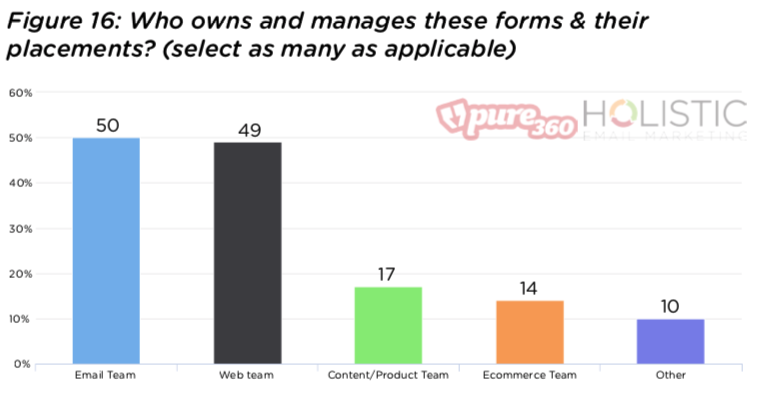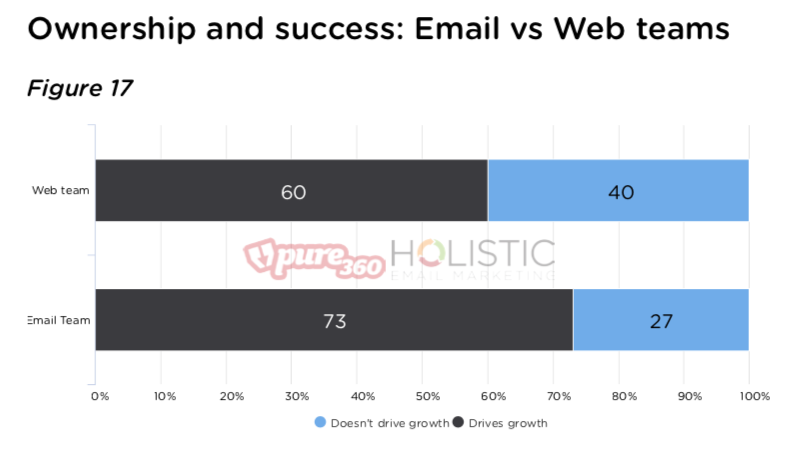Give Your Email Team the Keys to the Marketing Database
The company’s database containing email addresses, gained through web forms, has always been an email marketer’s greatest asset. Many marketers are re-learning that lesson in the wake of GDPR implementation in May 2018.
Although GDPR did not mandate re-permissioning email addresses, many brands in EU countries chose to go that route to comply with its stricter laws on data acquisition, transparency, privacy, storage and removal. Millions of addresses disappeared.
Now, brands must rebuild their databases to replace lost email addresses and accelerate growth to keep the email program vital and productive. So, marketers are prioritizing acquisition; but, with permission now mandated in most countries, they must rely on forms to collect subscriber permission and data and verify opt-in requests.
Here’s the problem: The web forms themselves are the marketer’s biggest hurdle to acquisition.
What’s the answer? Marketers won’t win the acquisition battle until they control everything about the opt-in form from its design to its locations, beginning with the homepage and extending throughout the site and beyond it. That will take a strong persuasion argument grounded in showing the value of email to the organization.
The problem with web forms on the homepage: Part 1
Almost every consumer brand has an email opt-in form somewhere on its homepage. That’s the good news. The bad news is that location is hard to find or fails to promote the benefits of opting in (or both).
In fact, 87% of the consumer brands in a Holistic Email Marketing study put the opt-in form in the bottom half of the website, most times, cramming the opt-in down in the tiny type in the website’s footer along administrative and contact links, instead of placing it at or near the top of the page.
The opt-in form doesn’t win the fierce battle for prime visual exposure on the homepage because the email team generally doesn’t get to decide where it goes.
That happens when email marketers don’t have the influence. Or, they haven’t effectively shown the web team and executives how email drives revenue and engagement and thus deserves the hot spot.
So, the web team, which owns page design and functions, gets to decide. But, the web team isn’t rewarded for driving email growth. Result: Web forms go wherever they fit in with the design, not necessarily where they will attract the most attention and drive the most conversions.
Homepages sell email short: Our research found email opt-in forms mostly in the middle of the side rails or down in the footer. This tells new visitors, “Email isn’t important in our company.” If it’s not important to the company, customers won’t value it, either.
How does your email team get the authority it needs to persuade the web team (and higher-ups) to give email a more significant position on website real estate? By showing how valuable those email addresses are.
Fortunately, marketers are seeing the light now, thanks to GDPR.
How GDPR highlights the value of an email address
Although many marketers complained about the strict new laws (they apply even to brands in non-EU countries with EU residents in their databases), others have been quick to point out that GDPR has a silver living.
Mainly, it has helped brands understand how valuable up-to-date, permission-backed emails are to the company’s health.
But, they had to learn that the hard way. First, they lost email addresses through deletions or re-permissioning exercises. Then, they saw an accompanying loss of revenue from email campaigns and other uses (account registrations, downloads, customer activity and more).
Even those brands who didn’t re-permission, were faced with the potential loss of data and revenue when they reviewed their permissions to see if they were in-line with GDPR’s requirements. Sometimes, it’s only when faced with losing something, that you really value it.
Many brands have designated 2018 as the year they rededicate efforts to grow their databases and are seeking to leverage every touchpoint along the customer journey and channel messaging to accomplish this.
The problem with web forms on the homepage: Part 2
Optimizing web forms will be a significant part of the push to rebuild databases. Marketers need rich forms that will drive more opt-ins and collect more data that they can use to create relevant, helpful marketing messages.
Web forms generate 72% of all database signups, according to Holistic Email Marketing’s newest report, “Email Marketing Personalisation.” However, only 50% of the email teams responsible for those forms have input into those forms. The remaining ownership is spread out among web, content/product, ecommerce and other groups.

We also learned that 24% of web teams owned database web forms exclusively, and the same percentage of email teams – 24% – claimed exclusive ownership.
Email teams shut out: If 24% of web teams own the forms that generate signups to the marketing database, that means 24% of email teams at those companies have no controlover that primary email-address collector tool. Yet, the email team is rewarded or penalized based on those signups. Not the web team.
Our study also found email and web teams disagree over the value of these web forms in generating database growth. As you can see, 73% of email teams who solely own their web forms say these forms drive the majority of their database growth. Only 60% of web teams agreed.

Show them the numbers: How more opt-ins equal more money
That’s why the email team must lead the way on optimizing web forms to increase opt-ins. The numbers justify any effort to boost opt-ins through visibility (seeing the form), value (benefits of email) and velocity (a friction-free process).
This quote, by Daniel Kahneman from his book Thinking, Fast and Slow, shows why velocity is so important for opt-ins:
“A general ‘law of least effort’ applies to cognitive as well as physical exertion. The law asserts that if there are several ways of achieving the same goal, people will eventually gravitate to the least demanding course of action … Laziness is built deep into our nature.”
What it means: Yup, people ae lazy. If we want our new website visitors to act, then we need to help them do it. If they can’t see the form, then they can’t act on it. The opt-in form must be as visible, the value as obvious, and the process as easy as possible.
How it pays off: Here’s where all of my arguments for giving the email team ownership over marketing web forms come together.
More email subscribers equal higher conversions, higher revenue and lower acquisition costs. The more subscribers who come into your database for free, and who stick around longer, the less money you need to spend on search or social marketing to attract new customers or bring them back again.
Assume that your conversion rate from opt-in to first purchase is 34% (a rate I see among my clients), and your average order value is $50. Look what happens when you grow your monthly opt-ins just by moving your web form from the lower half of your site’s homepage to the upper half. Below, we’ve included some conservative growth percentages to demonstrate the potential additional revenue.

Pretty impressive, yes? Now, look what happens when you consider customer lifetime value. This simple action – moving the subscribe form above the fold (the halfway mark on your website) can generate significant revenue increase beyond their first purchase.

Need more persuasion? Here’s one more argument: Customers who are email subscribers are more valuable to your company than customers who don’t get your message (like people who buy after finding your brand via search, word of mouth, social media or other sources).
The email service provider MailChimp analyzed 6 billion emails sent by its customers and turned up these astonishing findings:
- Subscribers order at least 25% more frequently than non-subscribers.
- Subscribers spend at least 6% more than non-subscribers.
- Active subscribers are 38% more likely to return for a follow-up purchase than non-subscribers.
- Inactive subscribers are 26% more likely to return than non-subscribers.
Conclusion: Give email marketers the keys
The brand’s website is a cooperative effort. Email, web, product and ecommerce teams all have something to gain and something to lose when their needs are ignored or minimized.
However, the email team all too often is shut out of decisions that affect the growth and health of the marketing database, a significant company asset and revenue source.
As an email marketer, you owe it to yourself, your team and your email program to make a persuasive case for getting a seat at the table. Use the numbers I’ve shared with you here, and find out what your own company generates from email.
Ask for ownership or a direct say into the creation and location of marketing forms, including newsletter signups, account-creation forms, content download registrations and event signups.
Your marketing database, the revenue you earn from email, and the future of your email program depend on it.
Interested in finding out more? Check out how the awesome team at Holistic Email Marketing can help take your email programme to the next level.
Originally posted on Never Bounce

